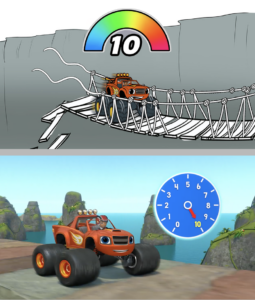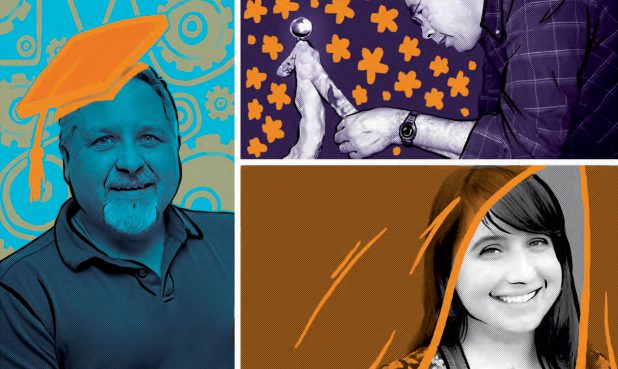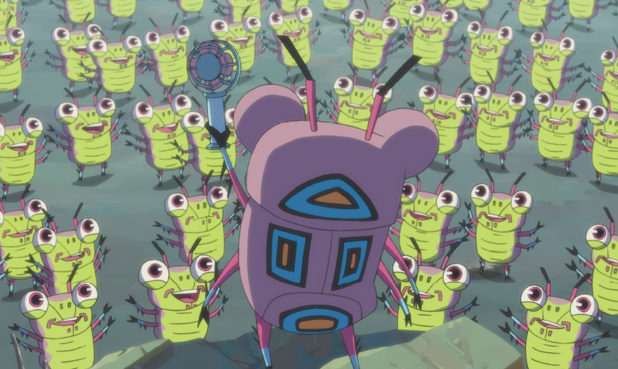Think about your early TV memories. Classic live-action shows like Sesame Street or Barney & Friends might come to mind. Series like these were among the first to introduce kids to concepts like spelling, arithmetic, literacy, as well as social skills, while offering entertaining storylines and lovable characters remembered decades later.
Today, though, it’s animated preschool shows (for ages 2 to 5) that are leading the way in offering a new level of learning experiences to an increasingly distracted generation. Gen Alpha is the first to grow up in a completely digital world, and the vociferous content consumers have been criticized for being socially awkward and having low attention spans as a result of so much screen time.

“The early childhood years are very formative,” says Laura Brown, Ph.D., who has served as an Educational Psychologist and Curriculum Director on productions for Nickelodeon, DreamWorks, and Disney Junior. “[Kids are] learning how to deal with their emotions, other people, [and] what they think about themselves. I think that if we can put content out there that benefits children and supports that aspect of their development, we’ve done a great service.”
I think that if we can put content out there that benefits children and supports that aspect of their development, we’ve done a great service.—Laura Brown, Ph.D.
Cartoon Network’s Jessica’s Big Little World, a spin-off of the popular big kid series Craig of the Creek, aims to develop kids’ emotional intelligence by reflecting the challenges of being little in a world of adults. “What touched me growing up were shows that gave me comfort, entertainment, reassurance—this opportunity to look outside of myself, which when you’re little you’re very new to,” says Showrunner and EP Tiffany Ford.
“[Jessica’s] story is about being too little to do the things that Craig wants to do, so we wanted to create a sense of magic in the things that are accessible for her,” Ford says. One of the ways they illustrate this is through color. The show incorporates different depths of color to help establish and convey Jessica’s changing emotional state, which is largely reflected in her home’s surroundings, and also to show that there’s an opportunity for magic wherever you are.
To develop Jessica’s point of view, personality, and character independent of Craig, the show has used educational consultants. Ford says preschool is a different ballgame entirely than what she was used to doing in the 6-to-11 demographic. It requires a degree of story supports that weren’t needed before. For example, Ford and her team learned, if Jessica is by herself, it’s helpful for her mom or somebody to say, “I’m just down the hall if you need any help.” Or if she falls, she can check in and say, “I’m OK.” This provides reassurance that wouldn’t necessarily be needed for an older audience.


Like Jessica’s Big Little World, Disney Junior’s Marvel’s Spidey and His Amazing Friends is another series that takes an established mature IP and adapts it for a preschool audience. The mission of the show is to model behavior that will teach kids social literacy like being a good friend or an active member of one’s neighborhood or community.
“We want stories to be exciting, funny, relatable, and preferably anchored by a lot of heart,” says Bart Jennett, who began as a Writer and Story Editor and is now Co-EP. “Luckily for us we’re making a show based on Spider-Man, which is an incredibly appealing property. It’s got a really winning ethos baked into it about using power responsibly.”
One of the challenges of adapting a superhero story for preschoolers is depicting action without veering into overt violence. To do this, they portray their villains more like silly nuisances than deadly foes, says Chris Moreno, a former Supervising Director turned Co-EP. This keeps the focus on the big messes the villains cause, with the superheroes stopping them in their tracks with smart solutions and lots of webs. “Most of our villains are adults, but we always boil down their motivations to very simple, childlike desires,” Moreno says. “For example, Doc Ock likes to show off how smart she is, Rhino is greedy and likes to steal stuff, Green Goblin is a spoilsport.”
Our kid characters usually have a pivotal inspirational moment where they use their smarts to figure out how to beat a baddie versus just using physical abilities.—Bart Jennett
Physical contact between characters is avoided and the action is so fantastical that kids won’t imitate it. Jennett explains that having three superhero characters who web up villains instead of physically fighting them helps keep things fun and non-violent. “Also, our kid characters usually have a pivotal inspirational moment where they use their smarts to figure out how to beat a baddie versus just using physical abilities,” he says. “When it comes to saving the day, we really focus on their teamwork and creative problem solving.”
“A big aspect to designing action for preschoolers is [visual] clarity,” says Moreno, noting how important it is for shot composition and editing to happen at a pace and direction that young eyes can follow. “This isn’t just for fast-paced action scenes, but also for visual gags and even quieter, more heartfelt moments,” he says.

Vibrant character design and color schemes are another way Team Spidey seeks to keep its young audience engaged. “Simple, bright, bold contrasts and combinations really draw and hold the audience’s eye,” says Moreno. Props and vehicles are visually connected to each hero and villain by matching the characters’ color schemes. This way, for example, it’s clear that a hammer belongs to Doc Ock because it’s yellow and green just like her. They also simplify what are already relatively simple superhero designs, “maybe reducing the number of webs on a pattern, breaking more complex shapes down into fewer larger ones, thickening what used to be a thin line on a costume to be a much bolder stripe, or brightening the existing colors,” Moreno says.
The show makes it clear, though, that it’s not just the suit that makes the superhero. “It’s the character of the person inside the suit that really counts, and I think for kids to see fellow kid characters modeling that behavior is incredibly aspirational,” Jennett says.
Learning Curves
While shows like Spidey and Jessica focus on increasing kids’ emotional and social development, Nickelodeon’s Blaze and the Monster Machines caters more towards left-brain engagement. The show—which has been on the air since 2014—is credited as the first preschool show on TV to comprehensively cover science, technology, engineering, and math (STEM) concepts in every episode.
“Back when we were in development, there were a lot of studies showing declining numbers in science and engineering among students,” says Developmental Psychologist Christine Ricci, the show’s Director of Curriculum and Development. “ We hoped an introduction to STEM at the early [ages] might somehow help kids maintain their love of STEM concepts as they move into the higher grades.”

The creatives resolved to let story be the gateway to the science. “We weave in the curriculum through interactive gameplay where the kids feel like they’re helping the characters,” says EP Jeff Borkin who created the show with EP Ellen Martin. If the kids are invested in the story, it makes it easier to engage them in challenging science concepts.
We weave in the curriculum through interactive gameplay where the kids feel like they’re helping the characters.—Jeff Borkin
In determining the right balance between story and curriculum, Ricci hosts focus groups of 18-20 preschoolers per episode. Writers’ outlines are loosely adapted into a picture book format and presented to kids in reading circles or virtual demonstrations. “Kids weigh in on every aspect of the story,” she says. “They get to hear the story before it’s a script or animation, and we get a chance to try out vocabulary and make sure our concept is presented in an age-appropriate and exciting way.”
Do the kids like the story? What do they think about the curriculum? Can they talk about it? Once these questions are answered, “we tweak it from there,” says Borkin. “We’re always calibrating how we talk about the curriculum based on what the kids are giving back to us.”
While Ricci offers educational consulting, curriculum work, and formative research (research that happens while the show is underway and informs future episodes), separate consultants are called upon for the STEM concepts. “I do a lot of work in children’s television, but I am not a STEM expert,” she says. A team of education experts helps determine correct wording and makes sure concepts are taught in the most accurate way.

In addition, experts can be employed to ensure more artistic elements like color, movement, texture, and background are expressed in a way that will translate for younger audiences. “We use color strategically to help kids mark out things that we want them to look at and to help them name and identify which things they’re talking about, guessing, or answering,” says Ricci.
“My consulting [also] relates to how the audience will understand, engage with, and be supported by the material,” says Brown, offering examples. “For preschoolers, you want there to be visual continuity and explicitness. You don’t want to cut from one environment to the next without showing some continuity.” One technique is to pull out and do a wide shot so children understand how two locations are related to one another. Then there is the storytelling, which should be mostly linear since flashbacks and jumps forward can be hard for young children to follow. And while story is essential for preschool shows, “I can’t stress enough that this is a visual medium,” says Brown. “Let’s say you show something visually and the dialogue contradicts it, the visual will be believed over what you’ve told them.”
Preschoolers have insatiable curiosity. Simplified but engaging storylines, bold but direct visuals, and game-based curriculum are all effective tools for teaching them. “[They] are wired to learn because that’s one indication to them that they’re getting bigger and becoming more like adults,” says Brown. Through this learning comes agency, offering endless opportunities for the unique medium of animation to empower children at their earliest stages of development.



